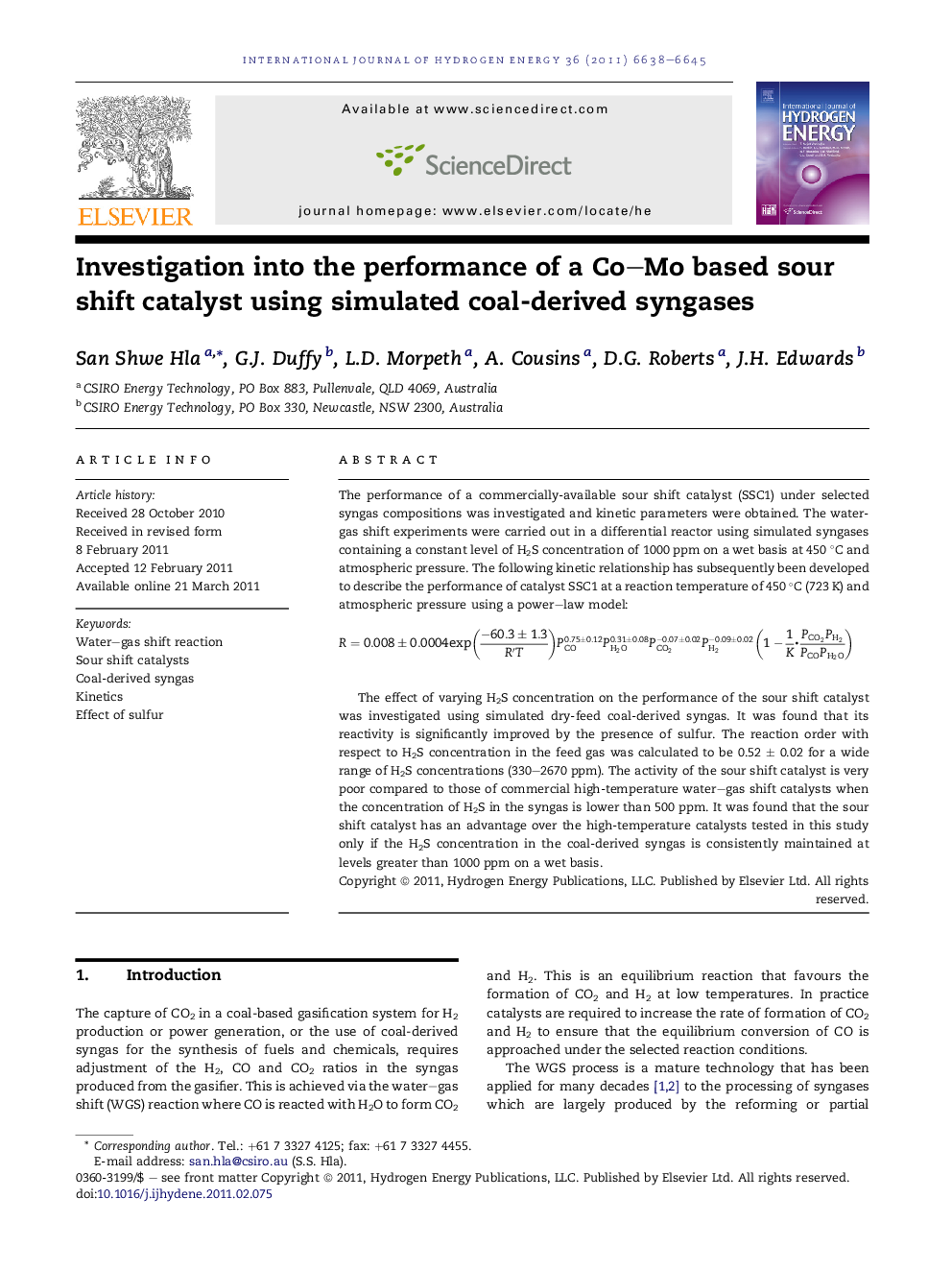| Article ID | Journal | Published Year | Pages | File Type |
|---|---|---|---|---|
| 1276022 | International Journal of Hydrogen Energy | 2011 | 8 Pages |
The performance of a commercially-available sour shift catalyst (SSC1) under selected syngas compositions was investigated and kinetic parameters were obtained. The watergas shift experiments were carried out in a differential reactor using simulated syngases containing a constant level of H2S concentration of 1000 ppm on a wet basis at 450 °C and atmospheric pressure. The following kinetic relationship has subsequently been developed to describe the performance of catalyst SSC1 at a reaction temperature of 450 °C (723 K) and atmospheric pressure using a power–law model:R=0.008±0.0004exp(−60.3±1.3R′T)PCO0.75±0.12PH2O0.31±0.08PCO2−0.07±0.02PH2−0.09±0.02(1−1K⋅PCO2PH2PCOPH2O)The effect of varying H2S concentration on the performance of the sour shift catalyst was investigated using simulated dry-feed coal-derived syngas. It was found that its reactivity is significantly improved by the presence of sulfur. The reaction order with respect to H2S concentration in the feed gas was calculated to be 0.52 ± 0.02 for a wide range of H2S concentrations (330–2670 ppm). The activity of the sour shift catalyst is very poor compared to those of commercial high-temperature water–gas shift catalysts when the concentration of H2S in the syngas is lower than 500 ppm. It was found that the sour shift catalyst has an advantage over the high-temperature catalysts tested in this study only if the H2S concentration in the coal-derived syngas is consistently maintained at levels greater than 1000 ppm on a wet basis.
